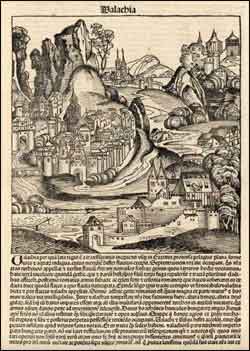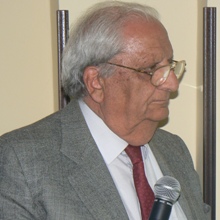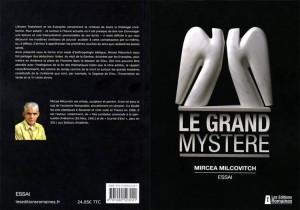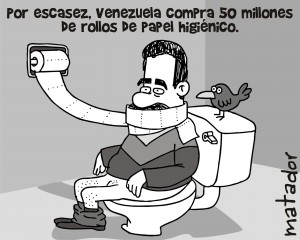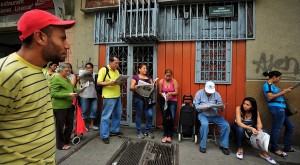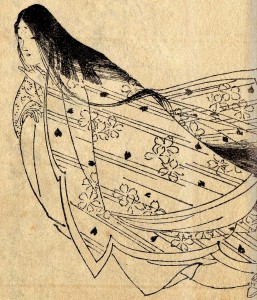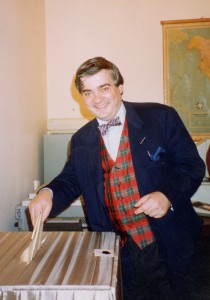

Constantin Roman: “Continental Drift”
Deriva Continetală – Coliziunea Continentelor şi Convergenţa Culturilor”
“Un Român în Derivă”
Dr. Ing. Şerban Veliciu
Profesor la Universitatea din Bucureşti,

Prof. Şerban Veliciu
Citind “Deriva Continentală” aflăm despre meandrele carierei lui Constantin Roman, cel care a reuşit să strălucească în domenii în care, la începuturi, nu promitea prea mult.
Am fost amândoi colegi de an la Facultatea de Geologie Tehnică a Insitutului de Petrol şi Gaze (astăzi la Universitatea din Bucureşti) şi am absolvit amândoi geofizica. Imi amintesc perioada studenţiei când Costi Roman îmi povestea că în liceu nu prea era pasionat de fizica şi de geologie (el dorea sa devină arhitect) ca să ajungă în cele din urmă inginer geofizician. Pe timpul studenţiei la Bucureşti, Costi nu s-a remarcat nici in tectonică şi cu atât mai puţin în seismologie, pentru ca mai târziu să ajungă bursier şi doctorant la Cambridge, iar domeniul în care s-a afirmat să fie “seismo-tectonica”! Acest succes nu este întâmplător, el se datorează unor calităţi recunoscute de către profesorii săi de la Bucureşti, şi anume, entuziasmul şi perseverenţa. La acestea se mai adaugă şi o a treia calitate, indispensabilă în profesia noastră – imaginaţia, calitate pe care a folosit-o la maximum în găsirea unor soluţii unice, de multe ori trecând peste dificultăţi insurmontabile.
În afară de capitolul introductiv despre rădăcinile familiei sale (“Amprenta genetică”) şi de perioada petrecută la Paris şi la School of Physics, în acest volum este şi un jurnal care consemnează observaţiile autorului despre perioada 1969 – 1973, petrecută la Cambridge, ca bursier al celui mai vechi colegiu, Peterhouse, ctitorit la 1284 de episcopul de Ely, un contemporan al descălecătorilor Tărilor Româneşti şi Moldovei. La Cambridge, Constantin Roman a avut privilegiul de a-şi efectua cercetările într-o perioadă când, la momentul potrivit, a fost îndemnat să urmeze un drum pe care puţini au păşit, dar unde fiecare drumeţ a fost remarcat. Acum, acest drum este aglomerat şi bine bătătorit de prea mulţi pietoni, dornici să ajungă în faţă, folosind toate mijloacele, chiar si datul din coate. In acest context, lucrările lui Constantin Roman au avut drept rezultat o nouă soluţie tectonică pentru manifestările seismice localizate in crusta continentală a Eurasiei: această soluţie a constituit un fundament pentru dezvoltarea ulterioară, la Cambridge, a teoriei Tectonicii Plăcilor şi a fost unică, in felul ei, din mai multe motive.
De o importanţă deosebită este interesul ştiinţific, provenit din recunoaşterea existenţei a noi tipuri de plăci litosferice – plăci ne-rigide sau plăci tampon (“non-rigid plates” sau “buffer plates”), descrise în revistele ştiinţifice. Câteva din noile-definite “plăci tampon” au fost separate din întinsa suprafaţă a crustei continentale aparţinând Eurasiei, în particular din arii situate în hinterlandul Himalaiei – Tibetul şi Sinkiang-ul, rezultat care va avea un remarcabil impact asupra teoriei Tectonicii Plăcilor. În plus, intuirea prezenţei unei porţiuni de litosferă oceanică, necunoscută încă, ce se scufunda sub crusta continentală a Carpaţilor, ipoteză publicată într-un numar al revistei “Nature”, din 1970, a reprezentat o contribuţie la marea lucrare care a fost reconstrucţia Mării Thetis. Aproape concomitent, Dan Rădulescu şi Mircea Săndulescu, la Bucureşti, explicau evoluţia geologică a ariei carpatice, ca un ansamblu de efecte ale Tectonicii Placilor. Recunoscând meritul deosebit al disertaţiei de doctorat a inginerului Roman, Institutul Geologic a publicat în intregime, în anul 1998, în Romanian Journal of Geophysics (l8, l998, Bucuresti) textul lucrării de la Cambridge, ca o recunoaştere a caracterului peren al modelelor stabilite cu 25 de ani înainte şi, în acelasi timp, ca o subliniere a priorităţii contribuţiei la evoluţia tectonicii alpine.
Constantin Roman a studiat la Cambridge sub îndrumarea a doi savanti de talie internaţională – mai întâi cu Dan McKenzie, şi după un an cu Sir Edward Bullard (memorabil pentru reconstructia matematică a Atlanticului, cunoscută ca ”imperecherea Bullard” – “the Bullard Fit”). C. Roman a studiat seismicitatea lanţurilor alpine – Carpaţii, Hindu-Kush-ul, Himalaia şi a Asiei Centrale (Tibet, Tarim şi Sinkiang).
Ca elev al lui Sir Edward Bullard, numele lui Roman se aşează într-o selectă serie de distinşi oameni de ştiinţă, aparţinând şcolii de Fizică din Cambridge, plecând de la Thompson, Rutherford şi Cavendish şi ajungând pană la Sir Isac Newton. Ca parte a acestei tradiţii, studiile lui Roman încercau să modifice chiar conceptul Tectonicii Globale.
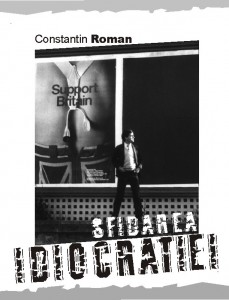
Deriva, sau Sfidarea Idiocratiei
Apariţia în Româneste, la
Centre for Romanian Sudies – London, a cărţii “Deriva Continentală” prezintă chiar fundalul pe care s-a construit teoria Tectonicii Globale la Cambridge (adică, oamenii, locurile şi evenimentele) nu este altceva decat o pură simetrie a două publicaţii perfect complementare – a tezei de doctorat, tipărite de I.G.R., şi anecdotica care a constituit baza acestei teze. In perioada anilor ’60 si ’70, acest nou concept, al Tectonicii Plăcilor, venea să revoluţioneze înţelegerea noastră asupra planetei Terra şi, în particular, să explice efectele coliziunii Eurasiei cu Africa, Arabia şi India. Este uimitor numărul mare de cercetători pe care acest nou concept i-a inspirat, primele articole publicate in
Nature,
Geophysical Journal si
New Scientist, rămânând printre “clasicele” literaturii de specialitate; acelea au fost primele dar şi cele mai inspirate zile, când Vine şi Matthews dezvoltau ideea “spreading”-ului fundului oceanic, iar canadianul Tuzo Wilson, pe atunci profesor în vizită la Cambridge, intuia dinamica faliilor transformante. Toate acestea au produs o frenezie a cercetărilor care au schimbat geologia într-o manieră ne mai întâlnită nici înainte si nici după.
Răsfoind paginile cărţii, cititorul descoperă, încetul cu încetul, tensiunile cu care se confruntau in viaţa reală oamenii de ştiinţă, cu erorile si slăbiciunile lor, cu rivalităţile si ambiţiile lor mărunte. Trecând peste toate acestea, cei care au cunoscut relatările lui Constantin Roman despre debutul său la Cambridge în domeniul Tectonicii Plăcilor, au fost uimiţi de efortul disperat de a învinge un grup de cercetători, de la Massachusetts Institute of Technology, în rezolvarea unei mari enigme a Stiinţelor Pămantului – seismicitatea Asiei Centrale. Închis în microcosmosul său de la Cambridge şi obsedat de cercetările sale, Roman a uitat de echipa lui Peter Molnar, de dincolo de Atlantic, care studia de mai mulţi ani aceleaşi cutremure tibetane şi care acumulase o mulţime de informaţii pregătite tocmai atunci pentru a fi publicate.
(Photo, Cambridge Evening News), 1973.” class=”alignleft size-medium wp-image-1313″ /> Trezirea sa bruscă la realitate a fost un şoc, deoarece fiecare element al probelor strânse cu trudă şi care constituiau miezul disertaţiei sale de doctorat, ar fi fost puse în pericol prin publicarea cu prioritate a rezultatelor colegilor americani. Această împrejurare unică în luptă, dubiile şi apoi triumful final al lui Roman, reprezintă un exemplu dramatic al unei dileme cu care se confruntă Omul de ştiinţă. El nu este sigur dacă o noua idee, esenţială, va fi uşor acceptată de cei de o aceeaşi profesiune, cunoscuţi mai mult pentru conservatorism decat pentru spiritul lor iconoclast. În consecinţă, Roman a considerat că este prudent să introducă în dezbatere aceste noi idei şi să le verifice în faţa unei noi audienţe, prezentându-le într-o serie de conferinţe, în calitate de invitat al unor universităţi britanice si de pe continent: Imperial College, Oxford, Cambridge, Norwich, Newcastle, apoi trecând canalul Mânecii la Liége şi Frankfurt.
Într-o anumită măsură, exista un cod nescris al oamenilor de ştiinţă, cod care recunoaşte, până la un anumit punct, o revendicare de prioritate dintr-o direcţie de cercetare pe care mizează un coleg şi acest cod a fost încălcat în perioada şederii lui Roman la Cambridge. Dar când competiţia începe să te ameninţe din toate colţurile, nu mai exista nici o reţinere ca să ieşi in faţă şi să-ţi aperi lucrarea, a cărei paternitate trebuie păstrată cu orice preţ. Această dramă nescrisă transpare din paginile “Derivei Continentale”, carte pe care o oferim tiparului, atrăgand cititorul cu extraordinarul etos al simţului viu pe care îl are creaţia ştiinţifică: relatarea în sine nu este Istorie, ci o contribuţie la Istoria unui domeniu al Stiintei, care cândva urmează să fie scrisă. Multe din dogmele sale sunt valabile şi astăzi, aceasta fiind o dovadă a cât de solidă este temelia pe care vor creşte generaţiile tinere de cercetători.
Dar, într-un sens mult mai larg, ceea ce trebuie subliniat este faptul că mai mult decât confruntările ştiinţei, sau ale oamenilor de ştiinţă, “Deriva Continentală” este o carte despre valori universale, despre Libertate, Umanism, Estetică, dar mai ales despre Bucuria Vieţii, “la joie de vivre”- acea corală a mediului ambiant care a inspirat cercetătorul, un mediu in care sunt create ideile cu adevărat permanente. Observăm aici impresiile care au colorat imaginaţia autorului şi care formează miezul naraţiunii, o interdependentă fără de care această cercetare ştiinţifică nu ar fi fost posibilă. Este vorba despre impactul pe care Europa Occidentală şi mai ales Marea Britanie, au avut-o asupra unui tânăr inginer din spatele Cortinei de Fier.
Ajuns la Newcastle, el afişează o nepăsare tinerească la faptul că avea doar cinci lire in buzunar! Biletul de călătorie in Anglia, a fost obţinut, în mod surprinzător, dintr-o bursa NATO, a cărei existenţă o ţinea secretă faţă de autorităţile române în caz că acestea din urmă i-ar fi retras permisul de călătorie (“Secretul NATO”). Si totuşi, autorităţile de la Bucureşti i-au dat voie sa călătoreasca, deabea în ajunul incheierii conferintei la care era invitat să-şi prezinte comunicarea – o tactică obişnuită din arsenalul birocraţiei comuniste, care încerca, prin toate mijloacele, să descurajeze contactele cu lumea din afară, bineînţeles, cu excepţia celor oficiale, ceea ce nu era valabil şi în cazul Roman. Atitudinea acestui neliniştit nici nu se compară cu obraznicia unui înalt functionar dela UNESCO al guvernului Român, şi agent al Securitătii, care, aflând că tânărului Roman i s-a oferit un loc de doctorant la Paris, l-a pus in gardă faţă de:
“această opţiune politică” (sic),
avertizându-l,in acelaşi timp, că:
“dacă ar vrea să se stabilească in Occident, în cel mai bun caz, ar ajunge cel mult, chelner într-un restaurant!”

Constantin ROMAN – Paris, May 1968 (1968)
Neţinând cont de acest avertisment sinistru, Costi Roman îşi petrece primele săptămâni în străinătate vizitând locurile turistice, închipuindu-şi că nu ar mai avea o altă ocazie să iasă din ţară. La întoarcere, în drum spre România, ca ori ce “român curios”, se opreşte la Paris “ca să vadă turnul Eiffel”…. De fapt, în subconştient, dorea să se întâlnească cu profesorul Émile Thellier, de la celebrul Institut de Physique du Globe. Thellier ii oferea lui Roman un loc la doctorat in arheomagnetism, dar cum acesta ajunge la Paris tocmai la 1 Mai l968, numai după o săptămână, studenţii francezi incep revolta lor, Franţa se scufundă in haos, şi, bineanteles, planul de studii devine inutil. Mult mai grav decât dezamăgirea profundă este faptul că Roman se află la Paris fără bani, fără posibilitatea de transport pentru a se întoarce în România, şi cu ambele vize expirate- cea Franceza de tranzit în Franţa şi cea de întoarcere în Romania (Capitolul “Paris-Revolta Studenţească). După o perioadă de trei luni, timp în care i se părea că existenţa lui atârna de un fir de aţă, Roman este salvat de către profesorul Kenneth M. Creer, de la Newcastle, care îi oferă un loc la School of Physics, ca “visiting research student”, pentru perioada de vară. Aici, Constantin face cinci cereri de bursă pentru doctorat, reuşind la trei concursuri, la Toronto, în Statele Unite şi la Cambridge, unde ajunge in toamna anului l969. Dar ghinionul îl urmăreşte şi aici, căci vechea universitate, la fel ca şi cea de la Paris, în anul precedent, este in revoltă, incendiind la propriu un hotel şi la figurat, spiritele, cu cartea feministei Germaine Greer – “The Female Eunuch”. Efectul acestei revolte nu a fost decât o copie palidă a mişcărilor studenţeşti pariziene, din 1968, un fel de Halloween cu mai multe focuri de artifcii, reuşind, totuşi, să facă scrum un hotel şi să îl pună pe fugă pe ministrul britanic al afacerilor interne. Fiind şcolit în spiritul dictaturii, unde orice formă de disidenţă era imediat sufocată, doctorantul român, paraşutat în mod neaşteptat în centrul acestor evenimente politice, rămâne desorientat, cu scările sale de valori complet răsturnate.
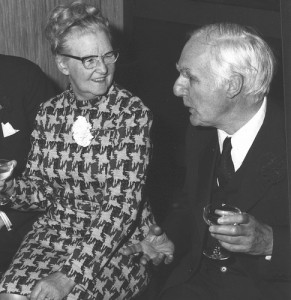
Teddy Bullard celebrating Constantin Roman’s Wedding at Cambridge, 1973
Contrastul de culturi dintre Est si Vest, dintre idealurile preconcepute despre Occident, romantice şi romanţate, pe de o parte, şi realitatea cotidianului pe de alta, crează situaţii efervescente, pe traiectorii diverse, cu întâlniri stimulante cu personalităţi din lumea artelor, a ştiinţei şi politicii (“Lotus eater”). Aici vedem cum personajele, arhitectura şi peisajul grădinilor englezeşti care îl inconjoară şi formează fundalul cercetărilor sale ştiinţifice sunt evocate cu multă emoţie si lirism, iar dacă acest cadru este punctat şi de ironie şi de un stil direct, cititorul trebuie să-l înţeleagă pe autor în intenţia sa de a prezenta o imagine nealterată, aşa cum a perceput-o de la început. Această înţelegere este necesară pentru că opiniile exprimate pe timpul acestor ani imaturi, dar fericiţi, au adesea o notă de aroganţă tinerească, şi de aceea cei care figurează ţn paginile acestei cărţi trebuie să le citească cu multă înţelegere. Aceste păreri încărcate de emoţie nu se pot explica mai bine decat a făcut-o Regina Maria, prin urmatoarele cuvinte:
“Cândva am fost un străin printre voi; acum fac parte dintre voi şi pentru că vin de atât de departe sunt capabilă să vă desluşesc mai bine cu calitatile şi defectele voastre” (“Tara mea”, l9l6, Londra, Hodder & Stoughton).
Fără îndoială este adevărat că, gândirea lui Constantin Roman nu ar fi prosperat in mediul stimulator al Cambridge-ului, mediu ce reprezintă vârful lumii academice britanice, fără largă cultură geonomică pe care el a primit-o de la şcoala română de geologie şi geofizică, reprezentată prin Facultatea de Geologie Tehnica a Institutului de Petrol Gaze şi Geologie din Bucuresti, al cărei student a fost la inceputul anilor ‘60. Aici si-a obţinut diploma în geofizică, cu o disertaţie asupra unui subiect abordat pentru prima dată în ţara noastră:
“Paleomagnetismul zăcămintelor de cupru din Dobrogea”.
Aceasta ne-a furnizat o primă sugestie despre viitoarea carieră a lui Roman, disertaţia fiind definită de conducatorul sau ştiinţific, profesorul Liviu Constantinescu, ca:
”o contribuţie semnificativă, indicând atât înţelegerea dar şi perseverenţa în rezolvarea unei probleme de cercetare”.
Mult mai încurajatoare în a sesiza potenţialul de talent din viitorul lui Roman, a fost aserţiunea profesorului Sabba Ştefănescu, ulterior membru al Academiei Române, care, în referatul de examinare scria:
“… el a găsit mijloacele să producă o foarte interesantă şi originală lucrare de diplomă, la absolvirea celor cinci ani de studii universitare..”,
“… lucrarea a fost scrisă atât de pasional şi frumos exprimată, încât dl.Roman a fost felicitat de examinatorii săi”.
Întorcând paginile acestei cărţi, este evident că viziunea utopică cu care a parcurs acest demers, a fost intersectată cu dezamăgiri şi regrese, pe măsură ce imperfecţiunile firii omeneşti au ieşit la suprafaţă. Si totuşi, în pofida celor amintite mai sus, acest Jurnal nu reprezintă un inventar exaustiv al greutăţilor întâmpinate, ci mai degrabă un refuz obstinat şi Quixotic în a accepta aceste dificultăţi. In alt context, o astfel de atitudine necompromiţătoare este rezumată, cum nu se poate mai potrivit, de Thomas Mann:
“În cele din urmă, aici pe pământ, nu mai rămâne decât o singură problemă de rezolvat: cum să ne ridicam şi sa plecăm, să spargem coaja crisalidei ca să devenim fluture”.
Citind această carte am fi tentaţi să-i şlefuim colţurile, dar nu ne permitem să facem aşa ceva, de teamă să nu umbrim bucuria cu care au fost împărtăşite aceste impresii de început, ele fiind componente indispensabile în desfătarea cititorului.
Ţinand seama de cele spuse mai sus, ne-am putea întreba:
“Deriva Continentala” reprezintă cumva oglinda în care se reflectă ochiul necruţător al musafirului de pe continentul european, aflat în derivă printre noi? Sau poate, mai degrabă, ar fi un diapazon, sau o cutie de rezonanţă care ne amplifică ecoul trimis de această solie? Sau, poate, în cele din urmă, să fie doar o istorie a ştiinţei, descriind deriva continentelor la începutul teoriei Tectonicii Globale? La o primă cercetare, toate aceste aspecte pot sa pară foarte diferite, totuşi, toate au o valenţă armonioasă şi perfect complementară, care justifică pe deplin tripla semnificaţie a titlului acestei cărţi – “ Deriva Continentală”.











